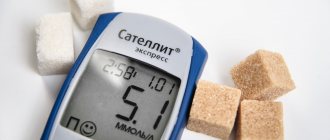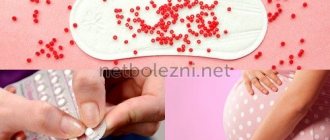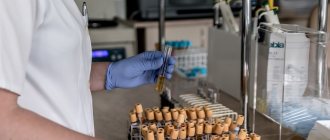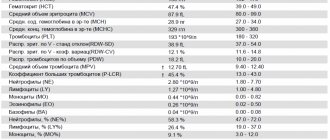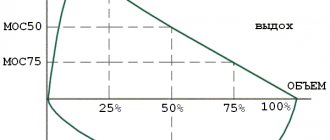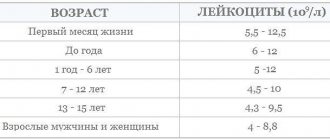Testosterone is an androgen (a steroidal male sex hormone) that is produced in small quantities in a woman’s body. It takes part in the regulation of metabolism and affects reproductive function.
Physiological changes in testosterone concentration are observed during puberty, pregnancy and menopause. Pathological causes of hormonal imbalance are severe damage to organs and systems, diseases of the endocrine glands, and tumor formations.
One of the most common female hormonal problems is an increase in testosterone levels in the body. The official name of the disease is hyperandrogenism.
Testosterone hormone levels play an important role in a woman's health. Deviation from the norm of this indicator should be a signal for immediate action.
Changes in the norm in women and what they are associated with
Natural changes in testosterone levels in the body occur in two cases: during ovulation and pregnancy. During ovulation, there is a sharp release of testosterone in the female body. This process increases sexual desire in women. At this time, the egg matures, thus the body makes it clear that it is ready to conceive.
During pregnancy, the amount of testosterone also changes. There is an increase in testosterone levels to a certain level. This is due to the fact that more energy is spent than usual to prepare the egg for conception, development and maturation of the fetus in the womb. An active increase in the hormone during pregnancy can be dangerous both for the development of the fetus and for the health of the expectant mother.
In addition to natural changes in testosterone levels, changes in testosterone levels can be caused by improper functioning of the body. Ovarian disease, poor functioning of the adrenal glands and some other endocrine system disorders provoke an excessive increase or decrease in testosterone.
An excess of testosterone indicates that it is time to check your endocrine system. You can notice a malfunction in the body by a number of signs:
- Failure of the menstrual cycle (absence or frequent periods two or three times a month);
- Unreasonable aggression, apathy, depression and melancholy;
- Change in voice, rough masculine notes appear;
- Increased hair growth;
- Breast reduction, body restructuring according to the male type;
- Negative changes on the skin of the face (the appearance of pimples and blackheads);
- Infertility
The other extreme is a lack of testosterone in the female body. At the same time, apathy, constant fatigue and loss of strength appear, the structure of the skin and hair changes. Low testosterone can lead to infertility in women.
In the first and second cases, you should immediately consult a doctor and get tested for the level of the hormone testosterone in the blood.
There may be several reasons for deviations from the norm. This is primarily due to physiological processes. This is influenced by several factors:
- Heredity and genes;
- Chronic diseases;
- Improper lifestyle and unbalanced diet;
- Taking contraceptive and hormonal medications;
- Ovarian tumor
- Pregnancy
The psychology of modern society can also cause an excess of testosterone. By engaging in purely masculine types of work and sports, refusing to bear children and procreate, a woman can cause some irreversible changes in her body. Hormones are closely related to a person’s mental state, so they will react accordingly.
Testosterone hormone in men
This hormone belongs to the group of androgens (steroid) , produced by Leydig cells in the testes and adrenal cortex. Testosterone in men
can be connected and active. Androgen is bound by proteins that perform a transport function, delivering the active substance to target organs. Active testosterone moves throughout the body and penetrates cells unhindered. The percentage of bound to active testosterone is 98% to 2%, respectively.
The main functions of testosterone in men include:
- regulation of the reproductive system, potency;
- puberty;
- development of secondary sexual characteristics;
- building muscle mass;
- regulation of metabolism;
- psychophysiological characteristics of behavior;
- control over sperm maturation.
The maximum level of the hormone is observed during puberty and in adult men. With age, testosterone concentrations decrease. The hormone mainly circulates in the body associated with albumins (54%), globulins (44%). It has an effect on tissue only in its free form. Total testosterone is determined in the blood serum using chemiluminescent immunoassay. If abnormalities are found, the serum bound globulin (SHBG) is checked.
The amount of testosterone depends on several factors:
- Young adulthood - the norm is 300-1000 ng/l;
- After 60 years - 50% lower;
- Seasons: androgen levels increase in autumn;
- Time of day: in the evening the amount of the hormone decreases by 13%, in the morning it increases.
Testosterone begins to work in males from the age of 13. Its task is to stimulate hair growth, the development of the musculoskeletal system and genital organs, influence spermatogenesis, the ability to ejaculate, the appearance of libido and loss of voice. In adolescents, body hair begins to actively grow, the voice “breaks” and bone tissue matures. In adult men, testosterone “guides” sexual function and arousal.
The main functions of testosterone in the male body
Increased testosterone in men
The amount of testosterone is controlled by the pituitary gland (an endocrine gland in the brain). When levels are low, the pituitary gland secretes hormonal substances that stimulate the testes to produce testosterone. The cause of excess of this hormone is active physical activity, endocrine tumors, Itsenko-Cushing syndrome, and genetic disorders.
Consequences of increased testosterone:
- Infertility;
- Strong growth of hair on the body;
- Alopecia on the head;
- Acne on the face;
- Apnea;
- Blood clot formation;
- Malignant neoplasm of the prostate;
- Instability of psycho-emotional state.
Low testosterone in men
The reason for the decrease in the amount of testosterone is dysfunction of the pituitary gland, hypothalamus, testicles, adrenal glands, Alzheimer's disease, obesity, steroid use, alcohol abuse and smoking. Lack of physical activity, unhealthy diet, stress, emotional tension in family relationships and conflicts also affect this. A natural decrease in sex hormone occurs after sex. The main manifestation of androgen deficiency is the formation of a female body type.
A man’s inability to conceive a child may indicate a low level of the hormone, therefore, if infertility is suspected, a testosterone test in men is required; the price can be obtained from a clinic consultant. To determine your testosterone level, you need to properly prepare: blood is donated in the morning on an empty stomach, 10 hours before you need to refuse food and water, and avoid psycho-emotional and physical overload.
Consequences of low testosterone in men
Treatment for high and low testosterone
It is easier and faster to treat the disease at the initial stage of development. Hormones are not to be trifled with, and therefore any deviation of testosterone from the norm should be corrected. At the first suspicion, consult a doctor, who may refer you for analysis or to an appropriate specialist (endocrinologist). Only a specialist will help you not to confuse hormonal imbalance with other diseases that have similar symptoms.
If the analysis shows an increase in hormone levels, the doctor will prescribe medication. Self-medication of the amount of testosterone production with drugs is extremely dangerous.
When women's hormone levels return to normal, doctors recommend monitoring the amount of testosterone production in the future. The fact is that after you stop taking the medications, the level may begin to increase again.
If a hormone test shows you have low testosterone levels, then first it is recommended to change your diet: eliminate coffee and alcoholic drinks, increase the amount of meat, poultry, fish, as well as vegetables and fruits. You should also not forget about proper sleep - 8 hours a day. These seemingly simple recommendations will help normalize testosterone levels.
In any case, for advice on how to bring testosterone back to normal, contact a gynecologist or endocrinologist who, if necessary, will prescribe you treatment. Remember that treatment is determined on a case-by-case basis.
Testosterone analysis: how to prepare
• Since physical activity stimulates the production of testosterone, you should avoid it the day before the test. This applies to intense sports and regular weight lifting. Smoking should also be avoided.
• For children and men, the test can be taken in the morning, on any day, for women - on the 6-7th day of the menstrual cycle (unless the attending physician has prescribed other dates for diagnostic purposes).
• The most favorable time to take blood for testing is from 8 to 11 am. A prerequisite is that blood is donated on an empty stomach, that is, after 8 and no more than 14 hours without food. You can only drink water.
How to get tested
To conduct the study, a blood sample is taken from a vein. Determining the most informative result occurs when a person is properly prepared for analysis. It is recommended that women undergo analysis on days 6-8 of the cycle. For both genders:
- fasting blood sampling;
- refrain from taking medications and alcohol for two to three days;
- stop smoking one hour before;
- be in a calm state.
If you contact the INVITRO laboratory, you will find out what testosterone is responsible for in your body, how to raise or lower its level. The blood sampling procedure is carried out by qualified specialists using a disposable instrument. The equipment here is the best, allowing you to get accurate results.
Preparing for analysis
Blood for free testosterone is taken early in the morning on an empty stomach. During this period, the concentration of the hormone is at its peak. Before the test, the patient should not eat or drink for 10 hours before the scheduled date of blood collection. An hour before this procedure, you should not smoke, actively engage in physical exercise, carry heavy objects or stress.
Additionally, you should inform your doctor if you are taking any steroid medications. The doctor recommends not taking them for a couple of days so as not to interfere with the results of the study. If the medicine contains androgens or estrogens, the specialist may discontinue them for a longer period before the date of the study. Any hormonal drugs that can artificially increase or decrease hormone levels are excluded several days before the planned date of analysis.
Blood for the hormone is usually taken from the antecubital vein using a puncture method using a tourniquet. After the analysis, you must wait 5 to 6 business days for the result. If necessary, the specialist will prescribe a repeat study to clarify the diagnosis and select effective drugs and a method of treating the disease.
What is the research used for?
A test for free testosterone is prescribed to men and women by their attending physician in order to identify certain health problems if signs are already appearing. The results provide an understanding of the processes that occur in the body and help prescribe the correct and most necessary treatment. The hormone is also given to diagnose certain pathologies, when nothing can be said externally.
Free testosterone is given according to a specialist’s indications for the purpose of:
- identifying the causes of delayed or early puberty in adolescents;
- in case of infertility or impotence of a man;
- if you suspect a tumor in the gonads;
- identifying the causes of virilization in women;
- to monitor the process of treating a tumor in the prostate;
- for acne on the face;
- to diagnose disorders in the hypothalamic-pituitary gland and evaluate the endocrine system as a whole;
- to determine the sex of a fetus with ambiguous sexual characteristics;
- if you are overweight;
- for problems with the thyroid gland;
- with sexual weakness or manifest impotence;
- in the case of undergoing therapy with antidepressants and identifying changes occurring in the body against this background.
Complexes with this research
Male confidence Assessing the risk of prostate cancer and monitoring testosterone levels 810 ₽ Composition
Male anti-aging diagnostics Monitoring key indicators in men aged 40+ 8,840 ₽ Composition
Female hormones. Follicular phase Assessment of the hormonal status of a woman in the follicular phase RUB 3,990 Composition
IN OTHER COMPLEXES
- Fitness monitoring RUB 4,480
- Anti-aging diagnostics. Hormonal balance RUB 4,490
- Check-up No. 1 for children and teenagers 7,140 RUR
- Preventative check-up RUB 4,070
- Advanced male anti-aging diagnostics RUB 25,520
What do the results mean?
The results of the test for free testosterone are interpreted by a specialist taking into account the characteristics of the individual patient’s body, his age and gender. While in men the hormone can fluctuate throughout the day, in women its maximum concentration is observed only in the middle of the cycle.
Normal for men and women
The table shows the indicators of free testosterone, which are considered normal depending on the gender and age of the patient:
| Floor | Age | Hormone value in pg/ml |
| Men | From 9 to 18 years (prepuberty) | More than 1.7 |
| From 9 to 18 years (post-puberty) | From 4.5 to 42 | |
| After 18 years | From 4.3 to 30.4 | |
| Women | From 9 to 18 years (prepuberty) | More than 1.7 |
| From 9 to 18 years (post-puberty) | More than 4.1 | |
| Over 18 years old | From 0 to 4.2 | |
| Postmenopause | From 0.1 to 1.7 |
Decreased performance
Free testosterone in men decreases against the background of the following diseases and processes in the body:
- genetic disorders leading to a failure in the production of normal hormone levels, resulting in dysfunction of the testicles and failure in the development of the reproductive system;
- Klinefelter and Prader–Willi syndromes;
- pathology of the hypothalamic-pituitary system associated with the production of luteinizing hormone;
- cryptorchidism, myotonic dystrophy;
- injuries leading to pathological formation of the genital glands;
- radiation injury, mumps;
- alcoholism, which led to intoxication of the body due to an increased dose of ethanol;
- uncontrolled use of gonadoliberins or antiandrogens, resulting in a failure of hormone production;
- age after 50 years.
For women, low free testosterone does not pose a danger. In clinical practice, doctors do not take into account the low value and do not prescribe therapy to level the indicators to normal. This phenomenon may be associated with stress, increased physical activity, or age-related characteristics of the body.
High concentration of testosterone
Excessive production of the hormone testosterone in women can be triggered by poor nutrition, too intense activity of the adrenal glands, or a hereditary predisposition.
The following symptoms may indicate an increased level of the hormone: male-pattern hair growth, changes in figure and voice, dry skin, hair loss, irritability, aggressiveness.
In the future, high levels of the hormone can cause the development of hyperandrogenism, menstrual irregularities, ovarian tumor formation and infertility. Therefore, if you have symptoms that indicate excessive testosterone production, you should definitely consult a doctor. Diagnostics and surgical treatment will help stabilize hormonal levels and protect against possible complications.
To the beginning of the section:: » Female hormones
Causes and consequences of testosterone level disorders
Free testosterone may decrease with:
• Hypogonadism;
• Alzheimer's disease;
• Cytochrome P450 deficiency;
• Erectile dysfunction;
• Using antidepressants;
Less commonly, low free testosterone occurs in older men, as well as after long-term treatment with steroid hormones.
Elevated testosterone is detected when:
• Hirsutism. This is excess hair growth in women with uncharacteristic localization of this growth - on the face, chin;
• Tumors of the adrenal glands;
• Polycystic ovary syndrome;
• Resistance of cell receptors to androgens.
